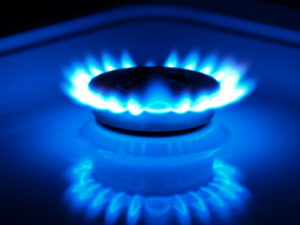 Natural gas fell for a second day on Friday and closed the week lower, despite projections for an overall warmer trend across the US, after the Energy Information Administration reported a larger-than-projected inventory build up.
Natural gas fell for a second day on Friday and closed the week lower, despite projections for an overall warmer trend across the US, after the Energy Information Administration reported a larger-than-projected inventory build up.
On the New York Mercantile Exchange, natural gas futures for settlement in August slid by 0.72% to $4.409 per million British thermal units. Prices ranged between a daily high of $4.466 and a one-month low of $4.375. The energy source plunged by 2.8% on Thursday following EIAs bearish report and closed the week 3.1% lower.
Futures declined on Friday in spite of weather forecasters predicting seasonal or higher-than-seasonal reading across the US following EIAs bearish natural gas storage report on Thursday. The government agency revealed a 110 Billion cubic feet (Bcf) jump in stocks during last week. A wide array of estimates were cast ahead of the report, ranging from 93 to 107 Bcf. NatGasWeather.com had predicted a 102-107 Bcf increase, while Tim Evans, an energy analyst at Citi Futures in New York, gave a 93 Bcf figure for Bloomberg.
Total gas held in underground storage hubs was still 27.4% lower than last years levels during the comparable period. However, the EIA has suggested gains will continue to be above-average, and that most likely inventories will be completely replenished ahead of winter heating season.
Stephen Schork, president of Schork Group Inc., a consulting company in Villanova, Pennsylvania, said for Bloomberg: “We continue to underestimate the market’s ability to get gas into the ground. It was a very large number and it was a bearish number.”
Meanwhile, the EIA said in its June 10 Short-Term Energy Outlook report that natural gas production is expected to advance for a ninth straight year, which would help refill the drained inventories during the stockpiling season.
Weather outlook
NatGasWeather.com reported on Friday that the US will see high pressure building up over the Midwest and Northeast, allowing for rising temperatures, which will reach into the 90s. A cooler system is moving eastwards through the Rockies, but will hardly impact readings as high pressure over the northern Plains will dampen much of its potency. However, the system will probably push readings down a few degrees later next week. Overall cooling demand will probably remain moderate-to-high.
In the 8-14 day outlook, NatGasWeather.com projects a warmer trend for the US. The high pressure over the southern US will expand into the North, lifting temperatures after the cooler system passes by. The southern, western and central US will see triple-digit readings.
According to AccuWeather.com, the high in New York on July 1st will be 88 degrees Fahrenheit, 5 above usual, which will be followed by mostly seasonal and little-over-seasonal readings throughout next week, before surging to 95 degrees on July 8th, 11 above normal. Temperatures in Chicago will peak at 82 degrees on July 1st, beneath the average of 84, and will remain below seasonal over the next 10 days, except for a spike to 90 degrees Fahrenheit on July 6th, which will be 6 degrees above usual.
In the South, Houston will see readings peaking at 93 degrees on Tuesday, 2 degrees above the average, but warmer-than-usual weather will give way to little-below-seasonal temperatures between July 6th and July 13th, after which the heat will return with a surge to as much as 96 degrees Fahrenheit, 4 above the average. On the West Coast, Los Angeles will enjoy seasonal weather over the next couple of weeks, with highs at 81-82 degrees on July 1st, except for a spike between July 6th and July 8th when readings will be as much as 10 degrees above normal.
Technical view
According to Binary Tribune’s daily analysis for Monday, in case natural gas for settlement in August penetrates the first resistance level at $4.458 per million British thermal units, it will encounter next resistance at $4.508. If breached, upside movement will probably attempt to advance to $4.549 per mBtu.
If the energy source drops below its first resistance level at $4.367 per mBtu, it will see support at $4.326. If the second key support zone is breached, the power-station fuel’s downward movement may extend to $4.276 per mBtu.





